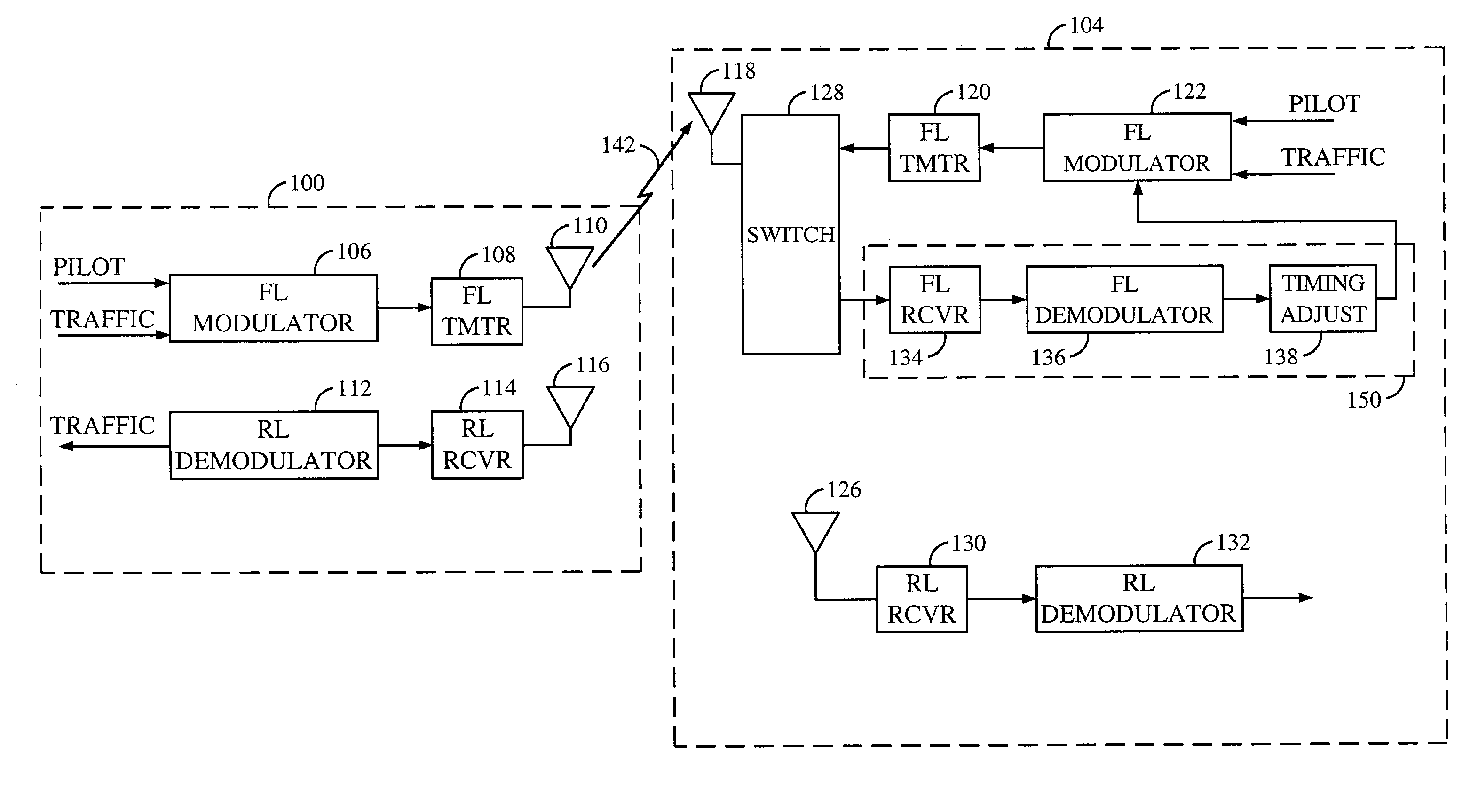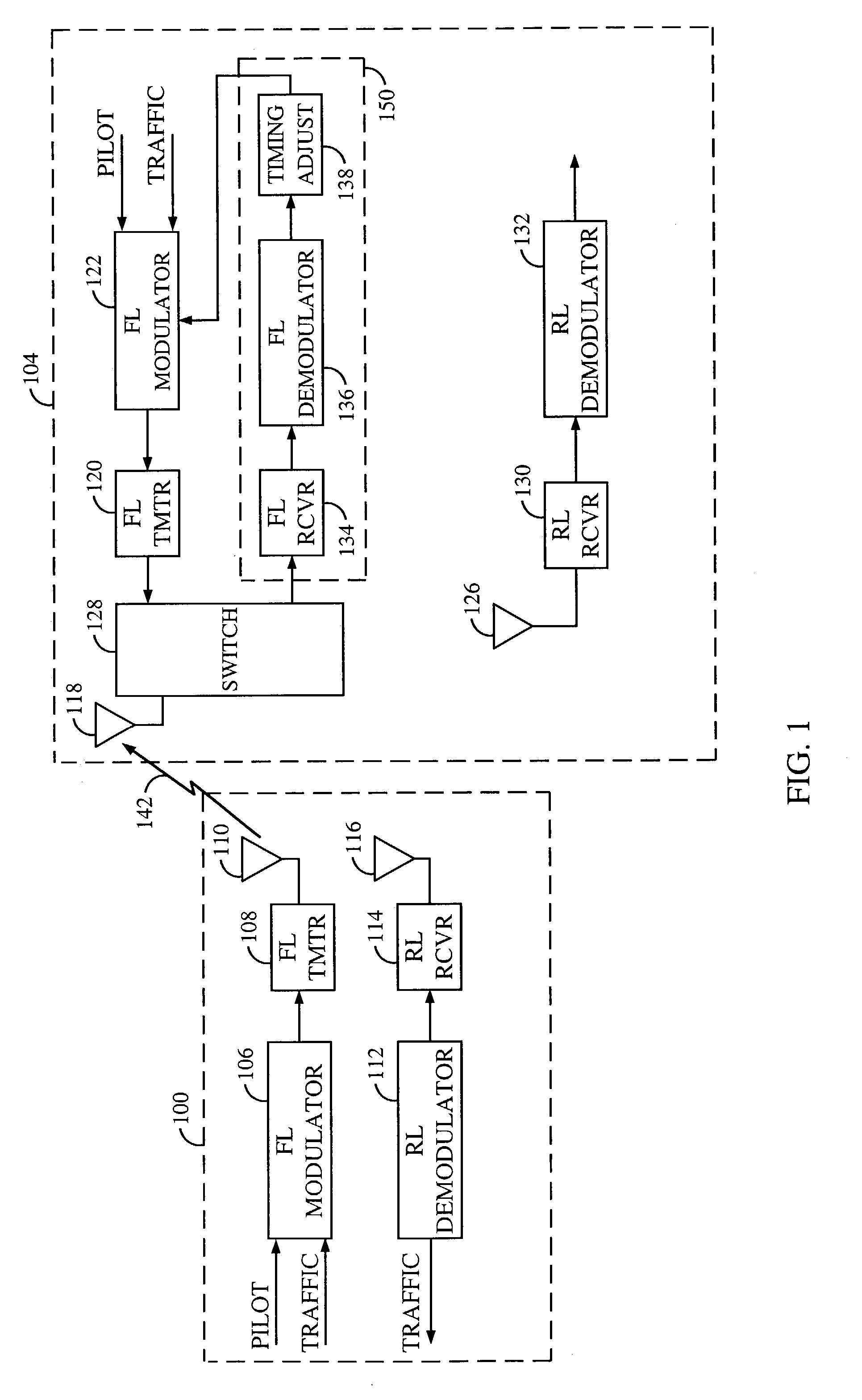Method and apparatus for providing wireless communication system synchronization
a wireless communication system and wireless communication technology, applied in the field of communication systems, can solve the problem of inability to direct base-to-base measuremen
- Summary
- Abstract
- Description
- Claims
- Application Information
AI Technical Summary
Benefits of technology
Problems solved by technology
Method used
Image
Examples
first embodiment
[0075]At the designated switching time, the received signal is provided through switch 315 to matched filter 317. In switch 315, switch 315 continues to provide the reverse link signal to reverse link demodulator 312 while providing the reverse link signal to matched filter 317. If the probe is transmitted at sufficient energy that the reverse link is essentially interrupted during the transmission, switch 315 may for a period inhibit the provision of the reverse link signal to reverse link demodulator 312.
[0076]Matched filter 317 is designed to provide the maximum signal to noise power ratio at its output for the predetermined transmitted sequence. Realizations of matched filter 317 are well known in the art. Two methods of realizing matched filter 317 include use of a convolution base matched filter and a correlator based matched filter. The function of matched filter 317 is to output a high power signal when the predetermined sequence is received.
[0077]The output from matched fil...
fifth embodiment
[0098]the present invention for base synchronization involves use of a simple transponder. As with the fixed dummy station of methods described above, this transponder is placed so that it can receive signals from two or more base stations.
[0099]The transponder periodically digitizes and stores the received signals on the forward link for a short time, and retransmits these samples on the reverse link. So the transponder gets a snapshot of the base station pilot transmissions which may be used to determine the relative timing of the base stations. Rather than process this information in the transponder, it is simply relayed to the base stations for analysis. This approach allows for a low-cost, low-power device to be employed. The transponder may also simply perform a frequency translation of the incoming forward link signal and retransmit on the reverse link without storing the signal. This requires the transponder to receive and transmit at the same time, but avoids the requiremen...
PUM
 Login to View More
Login to View More Abstract
Description
Claims
Application Information
 Login to View More
Login to View More - R&D
- Intellectual Property
- Life Sciences
- Materials
- Tech Scout
- Unparalleled Data Quality
- Higher Quality Content
- 60% Fewer Hallucinations
Browse by: Latest US Patents, China's latest patents, Technical Efficacy Thesaurus, Application Domain, Technology Topic, Popular Technical Reports.
© 2025 PatSnap. All rights reserved.Legal|Privacy policy|Modern Slavery Act Transparency Statement|Sitemap|About US| Contact US: help@patsnap.com



